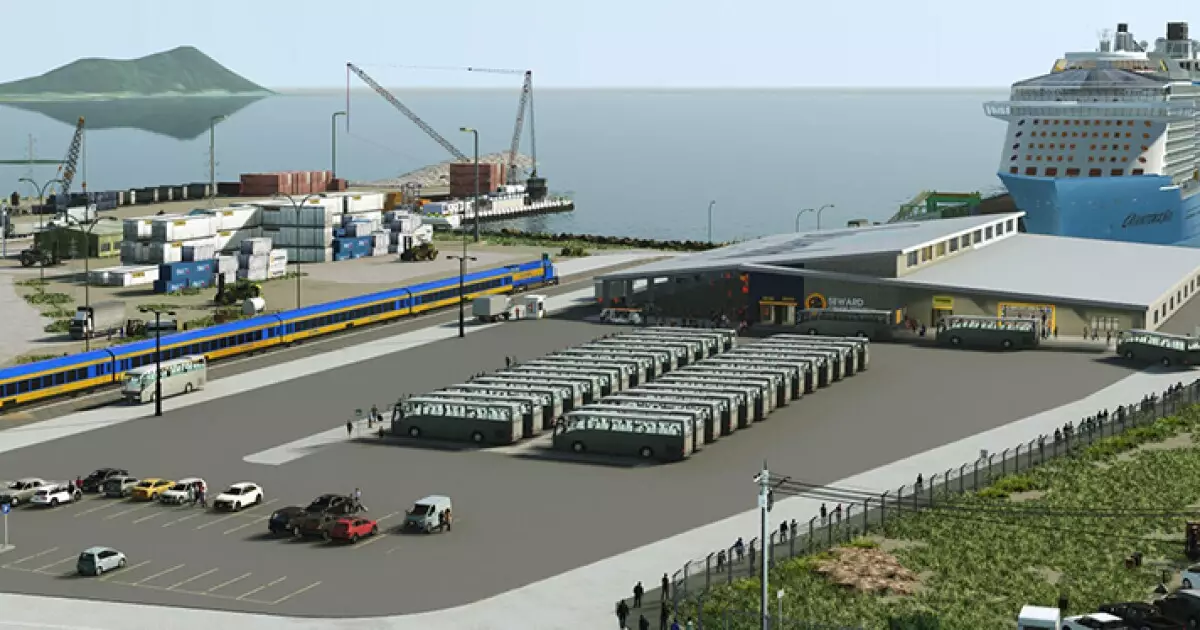When it comes to fostering economic growth in Alaska, the controversial yet visionary step of constructing a new cruise ship dock in Seward has ignited discussions. After Governor Mike Dunleavy signed House Bill 65, the Alaska Railroad Corporation has been empowered to issue up to $135 million in revenue bonds for this significant infrastructure expansion. Unlike traditional approaches to economic development that often drain state finances, this initiative promises to generate revenue without burdening taxpayers. Such fiscal strategies are essential in a state that consistently grapples with budgetary constraints. With the backdrop of an unsolicited national interest in cruise tourism, this bold venture could usher in economic benefits that ripple across multiple communities.
Anchored to Royal Caribbean: A Tactical Alliance
The docking facility’s viability hinges on a strategic partnership with the Royal Caribbean Group, which guarantees a minimum annual footfall of 140,000 guests. This agreement is more than a mere contract; it’s a lifeline that underpins the bond issuance and signals confidence in Seward as a tourist destination. While the cruise industry’s critics often highlight its detrimental environmental impact, this collaboration is a pragmatic solution to energize the local economy. By leveraging such an alliance, the Seward dock endeavors to not only attract cruise liners but also embed itself in the fabric of year-round economic activity. The collected port improvement fees won’t just service bond repayment; they represent a reinvestment into the local economy, spurring ancillary businesses from restaurants to tours.
More Than Just a Tourist Destination
Seward locals have long desired a multipurpose facility that enhances their community, moving beyond the singularity of cruise tourism. The new dock is envisioned as a year-round asset, transforming the way residents engage with their city. Kat Sorenson, Seward’s city manager, expressed that improved infrastructure would serve as a venue for significant local events like the Seward Music and Arts Festival. An inclusive approach to the dock’s design reaffirms a commitment to fostering a vibrant community space rather than just catering to transient tourists. While economic development is vital, it should not come at the cost of community spirit; hence the focus on multipurpose utilization is a refreshing aspect of this initiative.
A Outdated Facility’s Unceremonious Demise
Replacing the aging mid-1960s terminal has become imperative for sustaining the cruise industry in Seward. The pressing need for an upgrade is not merely aesthetic; it’s about preserving a fundamental source of economic interaction for a community that thrives on tourism. The decision to demolish the existing terminal by fall 2025, just before the summer cruise season, reflects a strategic timeline that allows for a seamless transition into the new facility. Alaska Railroad CEO Bill O’Leary has articulated a vision for a cutting-edge floating barge dock, which stands to benefit diverse sectors beyond tourism by facilitating intrastate travel as well. Such foresight is essential for long-term growth, ensuring that Seward remains relevant in an evolving economy.
Economic Benefits Beyond the Horizon
The economic advantages of this project extend far beyond just local employment during the construction phase. A new cruise dock, capable of accommodating quantum-class vessels, is expected to energize the wider regional economy, influencing communities throughout Southeast and Southcentral Alaska. With tourism set to blossom and cross-gulf cruise routes assured, the ramifications of this investment are potentially profound. Industries within the supply chain stand to gain — from seafood processing to logistics and retail services. Not only does this amplify local job creation, but it also strengthens the overall economic infrastructure of the state.
In navigating the complexities of state-budget politics, House Bill 65 stands as a testament to vigilant governance and a proactive stance toward infrastructure development. While criticisms about environmental concerns persist, Alaskan society must balance such apprehensions with the undeniable economic opportunities that arise from this venture. The Seward dock symbolizes a step toward rejuvenation—both for the local community and Alaska’s economy as a whole.


Leave a Reply